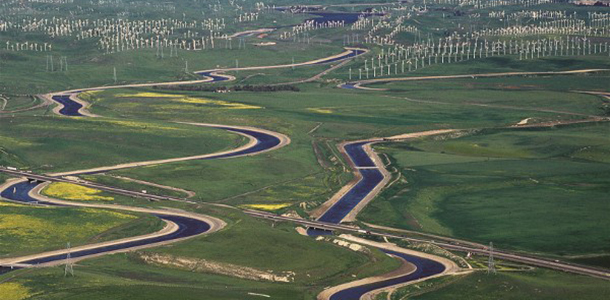
California aqueduct (Photo Credit: US Department of Interior)
California has always needed to manage water—from winter to summer, from mountains to coast, from north to south, from dry years to wet. But decades after many of the state’s water systems were built, the combined forces of climate change, economic growth, aging infrastructure, and increasingly stressed ecosystems have made it more challenging than ever to provide reliable water supplies.
And that was before the drought. During the first decade of this century, Californians used nearly 10 million acre-feet a year more from reservoirs and aquifers than was replenished by nature (or about 25 percent of total water diverted for human use). Since then, five dry years have exacerbated the problem to crisis levels—and finally raised awareness that Californians must act boldly to secure the state’s water future.
In the 2016 Playbook, the Summit outlines a plan for helping bring California’s water systems back into balance—promoting the conservation, reuse, and capture of one million more acre-feet of water each year for a decade.
The Summit is committed to meeting this challenge by supporting innovative approaches to integrating water management across watersheds—helping each region more efficiently capture and reuse each drop as it moves from mountains and headwaters to the sea. The California Water Plan acknowledges the need for this effort, and state water managers are committed to aligning government agencies to support projects that solve more than one problem—from capturing stormwater and recharging groundwater to improving water-use efficiency and reducing flooding.
In many regions, the question is: Who will manage these local interagency efforts—and who should pay for them? After playing an integral role in developing the next generation of local infrastructure financing tools, the Summit worked with regional water leaders in 2016 to connect land use planners and water managers, hosting a statewide symposium with the University of California Division of Agriculture and Natural Resources that highlighted the next steps communities can take to govern, finance, and manage water projects.
The Summit’s Working Landscapes Action Team also created a detailed action plan for integrating resource planning and ecosystem services tools, while promoting data technology to enable smarter project planning. The Infrastructure Action Team, meanwhile, continues to support dozens of communities that have taken steps to form new Enhanced Infrastructure Financing Districts to make water infrastructure investments.
In 2017, the Summit will support water management innovators as they identify pilots that make these projects a reality—helping coordinate governance of public agencies, establishing new financing authorities, and identifying regulatory changes that will allow every community to manage the state’s water supplies.
Read more about these efforts in the 2016 Summit Playbook—and register today to join more than 400 civic leaders at the California Economic Summit to shape how these strategies are put into action.

